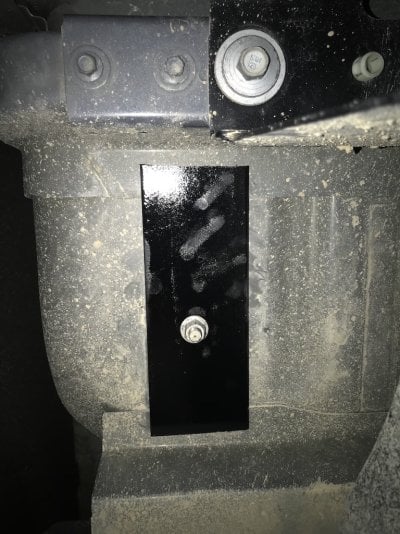Jack
Senior Member
Ranger (2019 and later) owners need to frequently and carefully inspect the front eye bolts. At least do a quick look from the underside of the bed.
An unpleasant surprise when we got back from a 5 day trip into NW Nevada - serious bed cracks and popped rivets around the front eye-bolt anchors. The right front Derringer was very loose and the left just a bit.
Looking it over and discussing it with the body-shop guy, it appears that the FWC install is not adequate for the thin (20ga?) Ranger bed metal for the front eye bolts. Rear seem to be OK, but should be reevaluated.
The eye bolts were installed by the dealer here in Portland per factory specs (Jeff has done a lot of installs) and he made sure the anchor plate rested on the lip of a support member. I've only had Derringers as tie-downs, so no issue of loosened turnbuckles.
The left front eye bolt was fine in November 2020 when I rewired from the truck to the camper and since that time we have traveled 6 or 7 weeks total. That includes about 250 miles of roads like those into Saline Valley. I periodically check the back tie-downs and they were fine when we started this last trip. Of course, once a tie-down loosens, the forces applied to the bed greatly increase.
I've dropped the truck off at the body shop and their custom work guy is going have a good look and get back to me on what best to do. I'll post an update.



An unpleasant surprise when we got back from a 5 day trip into NW Nevada - serious bed cracks and popped rivets around the front eye-bolt anchors. The right front Derringer was very loose and the left just a bit.
Looking it over and discussing it with the body-shop guy, it appears that the FWC install is not adequate for the thin (20ga?) Ranger bed metal for the front eye bolts. Rear seem to be OK, but should be reevaluated.
The eye bolts were installed by the dealer here in Portland per factory specs (Jeff has done a lot of installs) and he made sure the anchor plate rested on the lip of a support member. I've only had Derringers as tie-downs, so no issue of loosened turnbuckles.
The left front eye bolt was fine in November 2020 when I rewired from the truck to the camper and since that time we have traveled 6 or 7 weeks total. That includes about 250 miles of roads like those into Saline Valley. I periodically check the back tie-downs and they were fine when we started this last trip. Of course, once a tie-down loosens, the forces applied to the bed greatly increase.
I've dropped the truck off at the body shop and their custom work guy is going have a good look and get back to me on what best to do. I'll post an update.









